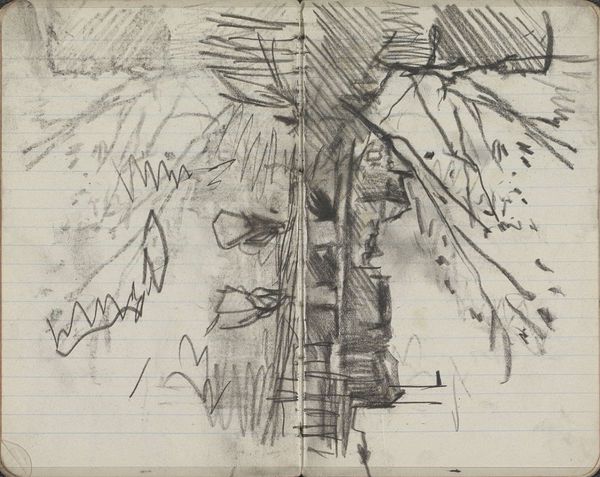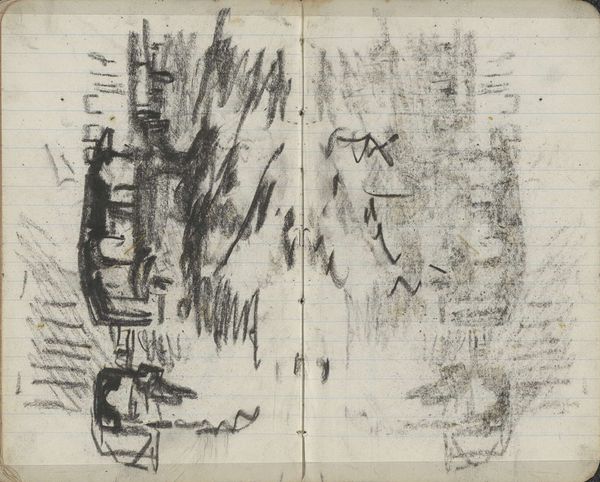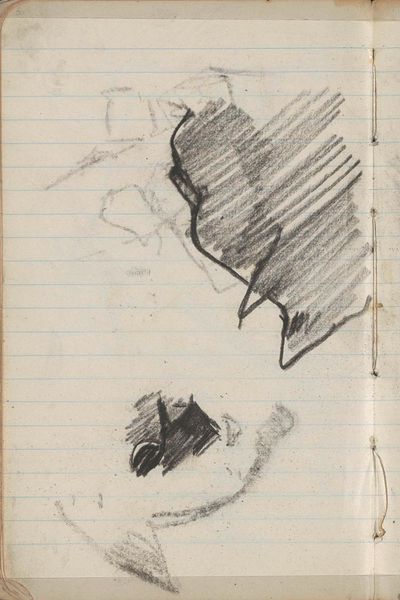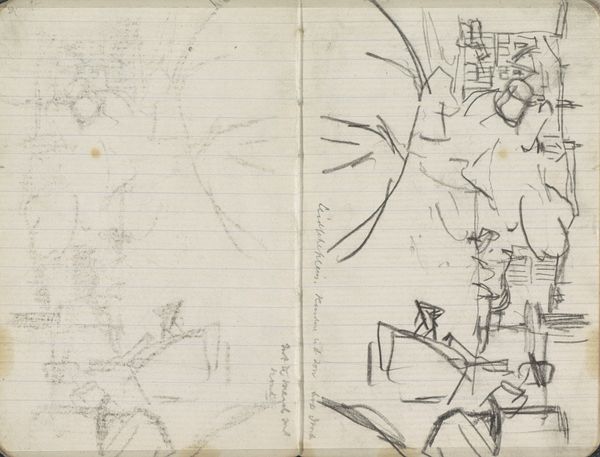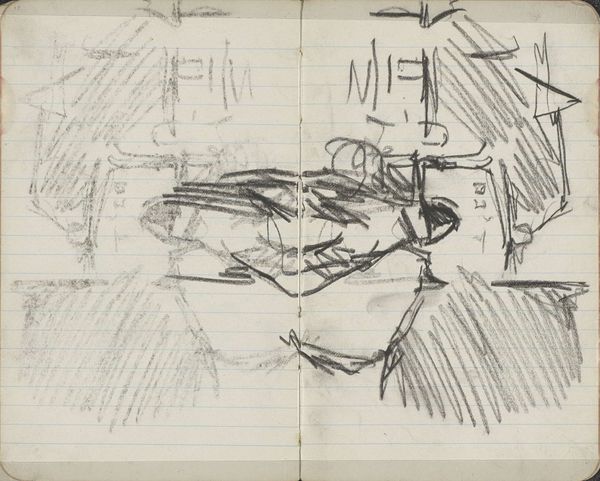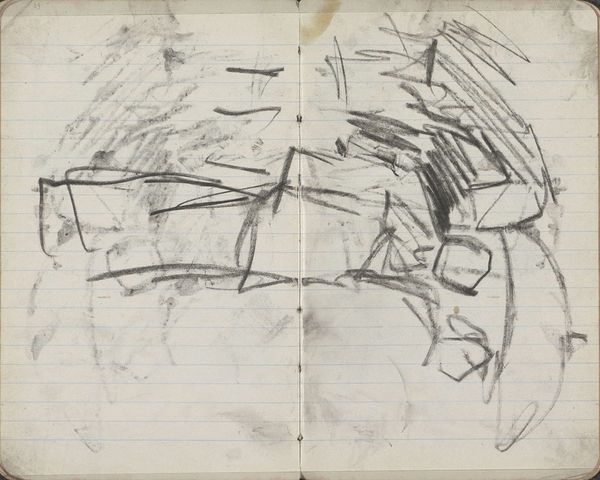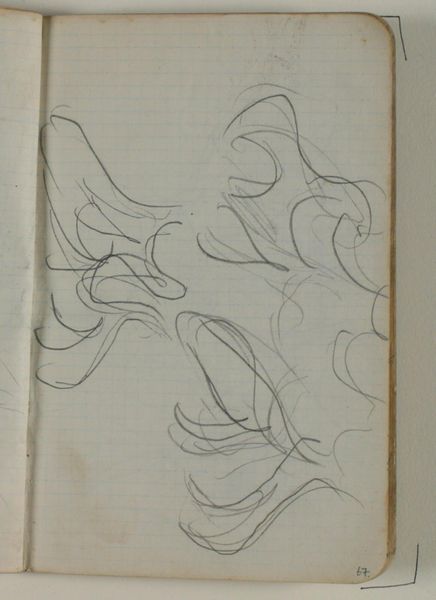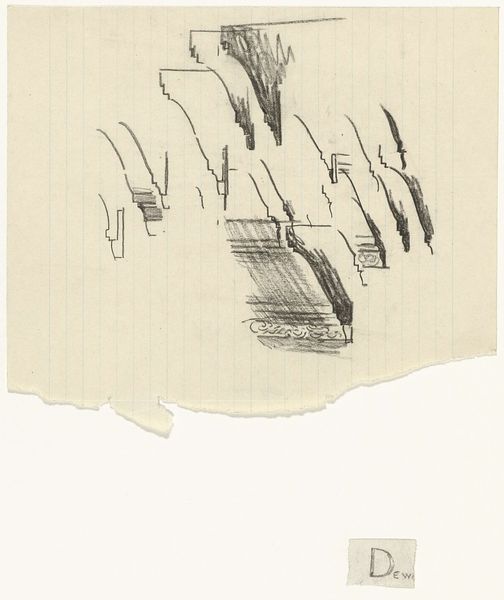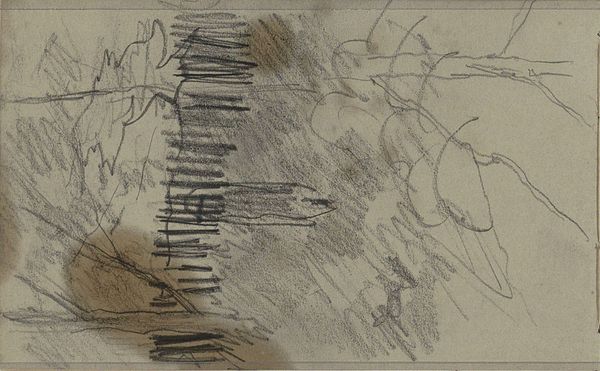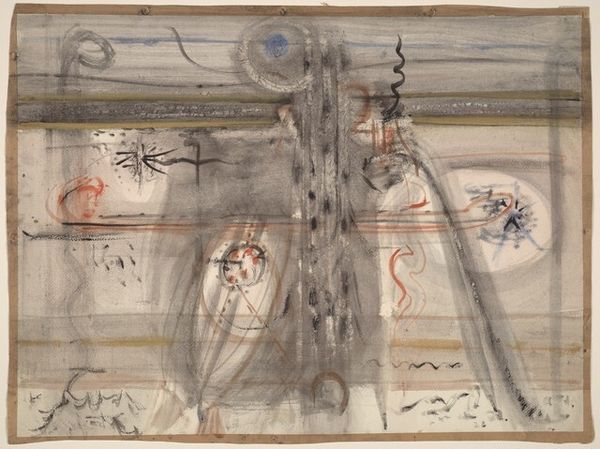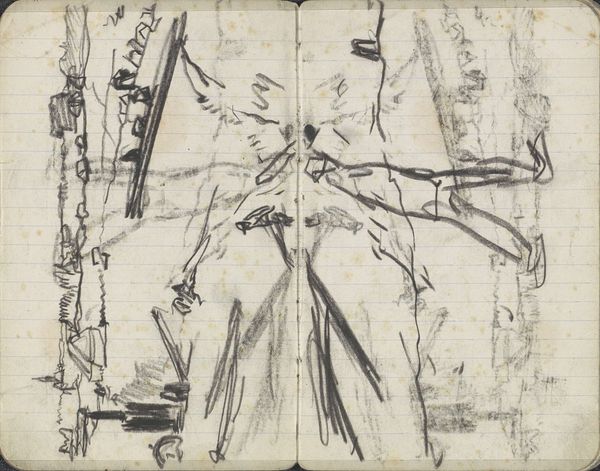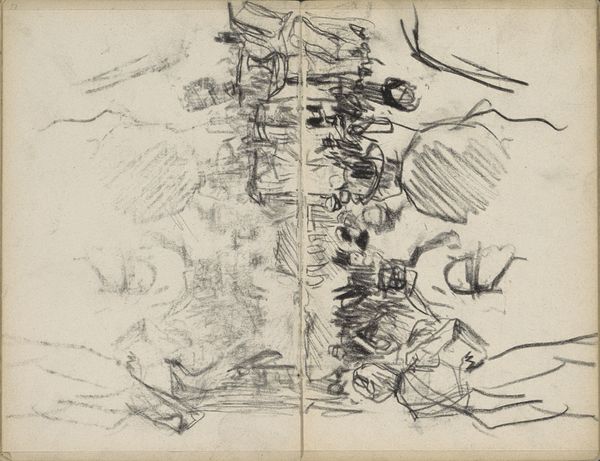
drawing, paper, graphite
drawing
amateur sketch
toned paper
light pencil work
pen sketch
incomplete sketchy
paper
personal sketchbook
ink drawing experimentation
pen-ink sketch
abstraction
graphite
sketchbook drawing
sketchbook art
modernism
Copyright: Rijks Museum: Open Domain
Curator: Breitner’s "Studie," created around 1894, is presented on toned paper and incorporates pen, ink, and graphite. The hurried and incomplete nature is typical of a sketchbook, don't you think? Editor: It’s jarring. My initial reaction is a kind of unsettled feeling – a chaotic, almost Rorschach-like form. There is little grounding, and a top-down dynamic that pushes forward towards the viewer in layered pencil strokes. What do you see here? Curator: I see the swirling chaos that defined much of late 19th-century modernity. The quick strokes capture a sense of speed and anxiety – think of the rapidly changing urban landscape Breitner was documenting at the time. He was part of the Amsterdam Impressionism movement after all. Editor: True. These dark, solid marks, contrasting with the wispy lines, create a dynamic tension, which is really satisfying. This interplay feels almost confrontational. Curator: Considering its resemblance to abstraction, this "Studie" suggests a break from academic traditions toward more individual expression and subjective interpretation, marking an early form of Modernism, like movements in Vienna. The piece might resonate differently knowing the context. Editor: Absolutely. The form seems so raw, honest even. Almost like you are intruding into the most inner recess of Breitner’s consciousness. Do you believe he intended this kind of intimacy to be revealed to an audience? Curator: I think that the nature of sketchbooks is inherently revealing; a glimpse into the working mind of an artist. These were likely his private contemplations, personal impressions if you like, on paper. The abstraction present, therefore, has to be viewed as accidental – we, the modern audiences, merely project contemporary lenses onto older works. Editor: I see it a bit differently; perhaps these seemingly simple studies hint at a profound visual investigation—an artistic precursor to later explorations in abstract and surrealist form? It holds its complexity well, so either reading might be acceptable. Curator: Perhaps there’s no one ‘correct’ reading – maybe the sketch exists precisely in this liminal space. It is a worthwhile reminder of how historical pieces acquire relevance for evolving, future societies. Editor: Agreed, that interplay between intention and reception is quite potent here. Thanks for sharing this interpretation with me.
Comments
No comments
Be the first to comment and join the conversation on the ultimate creative platform.
